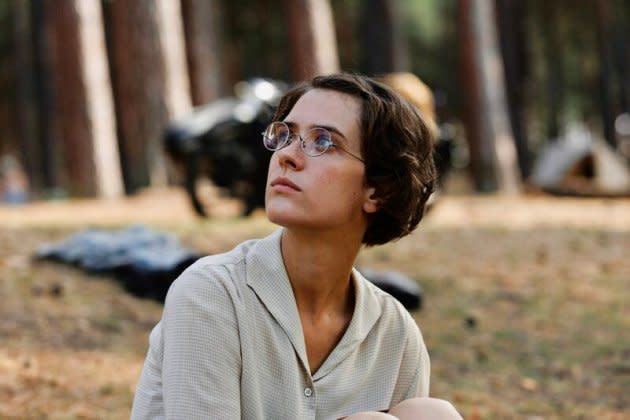
How I learned about the Wiradjuri massacres

Sydneysider: A personal journey
In my youth, a great many Sydneysiders had some link to “the Bush”, either by family or friendship, reflecting the fact that, back then, a greater proportion of our population was engaged in rural industries.
In the late 1950s and early ’60s I was lucky enough to spend some holidays on a working farm. My father met Stan Neville when they were recuperating in Concord Hospital after the war. Stan’s property, ‘Rossmoyne’ was on the south side of the Durridgerie Rd, off the Ulan Rd, North of Mudgee. It backed onto the rugged hills of what’s now Goulburn River National Park. He ran sheep mainly, but also cattle, and he grew wheat. Dad and I often drove up to stay with him for a few days.
Stan had been a trooper in the famous Light Horse which, between the wars, was a volunteer Militia outfit. By 1939, when it became evident that cavalry weren’t going to play a role in the next war, the Light Horse regiments were converted to motorised infantry or armoured units. But when the war came, Stan joined the air force, became a crewman on Catalina flying boats in the Pacific and was badly injured.
He lived in a small fibro cottage which lacked the magnificent verandahs of an earlier generation of homesteads. A single long space on the west side of the house served as a living room and kitchen. At the end there was a big iron stove that was always kept smouldering because it also supplied hot water. There was no electricity, so Stan used pressurised mantle lamps.
A beautiful framed map of New Guinea hung on one wall. Printed on silk, it was Stan’s ‘escape map’ – an item carried by air crew in case they were downed. Stan had quite a few fat and serious books but the one that most interested me was ‘Seven Pillars of Wisdom’ by one T.E. Lawrence. It was a hefty volume in a tan dust jacket with a simple pen-sketch of the author wearing Arab head-dress and it was lavishly illustrated.
Behind the house there was a corrugated iron barn – a place of wonder, full of exotic equipment including Stan’s real Light Horse saddle and its .303 rifle bucket. It also housed an old tractor, a battered Holden ute, kelpies Donko and Brainless, and his two horses Winston and Welcome.
Winston was a big cavalry ‘Whaler’ (Stan was a very big man) but Welcome, the mare, was a rather smaller beast. I was taught to saddle and groom her and given a few tips on riding. Alas, a young boy was no match for Welcome, who was happiest just hanging out at the farm, and it was very difficult to get her to do anything but plod outwards from home. On the return journey, she was liable to break into a gallop and I had to hang on grimly. Once I fell off, loaded rifle and all, and fractured my arm.
Stan was a man of progressive views and he used to say that when his neighbours decried his failure to eliminate kangaroos from his property he’d say his idea of leisure was “not doing everything you’re supposed to do”. He and dad used to drink lots of beer and talk about the war and the old days.
But there was a dark side. Once they talked about how the local Aborigines (who we now know as the Wiradjuri People) had been killed off in massacres and by poisoning the waterholes. I was rather shocked by this and tucked it away in my mental card index.
One day Stan took us to see some Aboriginal paintings about half an hour’s drive from his property. We took a dirt track off the Ulan Road and then walked to a long, beautiful, rock shelter in which there were many mysterious stencilled hands.
In 2000, by one of life’s strange coincidences, I was to return to the place which was, by this time, an Aboriginal site officially known as Hands on Rock. As the National Parks and Wildlife Service’s regional publications officer, I had been asked to prepare a large explanatory sign to be installed near the site’s car park, so I went up there with a young Aboriginal archaeologist. The roskshelter was almost as I remembered it from 40 years earlier.
My display featured the Mowgee clan’s Dreamtime myth about the creation of the Milky Way, so I drew a series of cartoon panels illustrating the story. I was rather nervous about whether the local Aboriginal elders would agree to have me interpret their culture in this way, but they were happy with the result and I was overjoyed to be of some help.









